INTERVIEW with DR. KLEANTHIS ZOUBOULAKIS, historian specialized in Ancient History
Cultural pilot: a brief premise
How to build an appropriate extended reality experience for cultural scenarios?
BRIDGES consortium presents two interviews to better understand what is requested to design visitors’ experience for informal learning and cultural applications.
The interview
- Dear Kleanthis, please introduce yourself, your job and your role in BRIDGES project
My name is Dr. Kleanthis Zouboulakis. I am a historian specialized in Ancient History. I participate at the Bridges Project as a scientific consultant of the Foundation of the Hellenic World (FHW).
- What is your main objective?
The educational aspect of the experience, as well as the validation of the historical truth is the primary goal of any XR experience for us. It is of great importance to fulfill three objectives: to be experiential, historically correct and educationally effective. Thus, a vast amount of historical and archaeological documentation should be assessed in order to present the historical truth, and provide a valuable educational experience for the public, focusing primarily in aspects of everyday life of Greek Antiquity. The historical team of the project is dealing with the selection of appropriate elements.
- Could you please describe your concept of “experiential”?
Nowadays, the key aspect for the public to come in touch with the past, especially the distant past of antiquity, is participation in activities that can create a more personal sense of understanding for past ages. This is why, “everyday life in antiquity” has been the main focus, so that people can relate to such a distant past through the lives of ordinary people. For example, in many video games the player has to make decisions, based on the historical atmosphere of the scenario. The selection of a set of suitable historical details in order to create a certain universe can lead to an immersive historical experience that would offer to the participant through his interactions with the digital environment the intended knowledge about this certain past.
- What features does a museum need to have, or need to equip itself with, in order to offer its audience an informal learning experience using XR?
The experience will be based on Head Mounted Display technology, active tracking and natural user interactions. A dedicated location (Immersive Holodeck, if you like) will be created, where visitors will experience a lifelike visit to an Ancient Athenian Home. The visitors will learn about everyday life and the culture of the Ancient Greeks. They will get to wear special XR equipment and will be able to walk around the area of the Holodeck, so they will participate in a deeply immersive storytelling experience.
- What are the challenges in combining gamification and historical/cultural accuracy for informal learning experiences?
The challenges are many and complex. As I have mentioned above, critical details are important so that the participants can relate to such a distant past. These details are not always so easy to define and therefore we cannot always be 100% confident that the presentation is historically accurate in full. This is why, we insist on constant documentation and research, through the latest trends of the Science of History and Archaeology, so that we may guarantee a reliable outcome. For example, what was the most common way for the families to have their meals in the 5th or 4th Century B.C.E. in Athens? From the many possible scenarios, one has to sometimes make a calculated guess for the most plausible scenario.
- Could you please describe practically what “storytelling” deals with this activity?
Storytelling, when used appropriately, is one of the key elements of the whole experience. Like the technique the ancient orators employed, the Πρόσεξις, meaning to grab your audience’s attention, storytelling is the element that gives the experience the means to grow past just a static VR exhibition and immerse the participants further. Once again, the struggle lies in balancing the need for historical accuracy and captivating storytelling.
- How can Bridges technology improve your work?
Bridges technology can improve the creation of a historical experience in so many ways. First of all, the 3D aspect is of utter importance. This, combined with the element of movement, makes it even more realistic. Triggering the senses of the participant is very challenging for a historian or an archaeologist who has to convey his/her knowledge, in an appealing and playful way to captivate the audience.
Would you like to know more?
Read the secon interview here.



